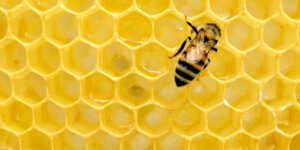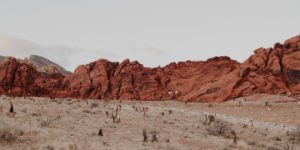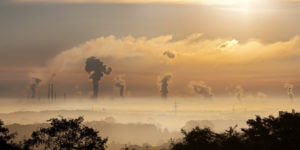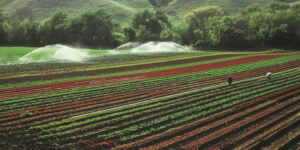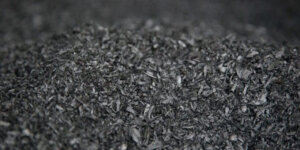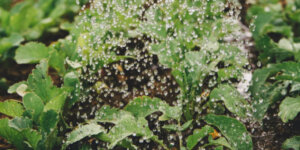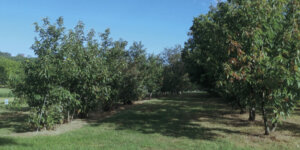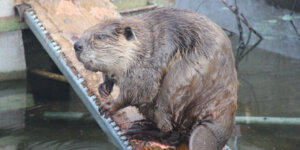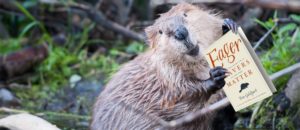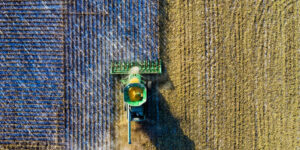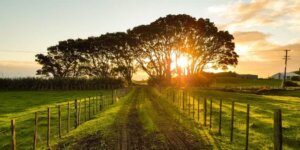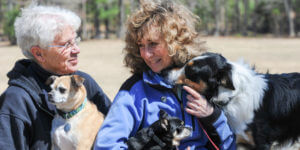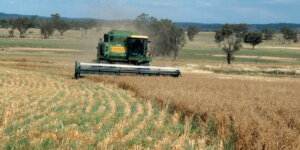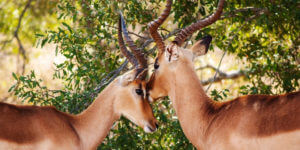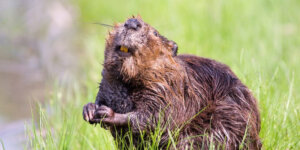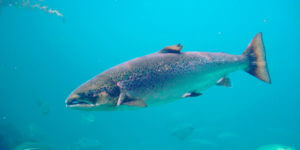Chelsea Green Blog
Nature & Environment
Hope for a Thirsty World
Judith D. Schwartz is a journalist whose recent work looks at soil as a hub for multiple environmental, economic, and social challenges and solutions. She writes on this theme for numerous publications and speaks at venues around the world. Her 2013 book Cows Save the Planet was awarded a Nautilus Book Award Silver Prize for…
Read MoreCool It Down: Using Fire to Cool the Earth
Albert Bates is one of the founders of the intentional community and ecovillage movements. A lawyer, scientist, and teacher, he has taught village design, appropriate technology, and permaculture to students from more than sixty countries. Kathleen Draper routinely collaborates with biochar experts from around the globe as a board member of the International Biochar Initiative…
Read MoreMinerals in Your Farm’s Water
Minerals from soil and outside water sources find themselves in irrigation systems. When you water your land, these minerals infiltrate the soil and change its composition. Your plants are more impacted by their presence than meets the eye, but what exactly is the relationship? The following is an excerpt from Water in Plain Sight by…
Read MoreWater Connects Us All
Water is always changing and impacting the environment around it; storms form, droughts occur, and floods damage. It seems that the level of water on Earth is bouncing between extremes. These shifts are tied to the state of our climate. In the past, climate change seemed like a far-off concept; now it’s becoming more present…
Read MoreHow to Make Biochar
For something that looks like a lump of charcoal, biochar certainly has a great press agent. The subject of books, articles, blog posts, research papers, workshop presentations, conference talks, and various top-ten-ideas-that-will-change-the-world lists. Its potential ability to address a variety of global challenges is indisputably large. So, how exactly do you make this strange material?…
Read MoreDepressed about Climate Change? Here’s How to Take Action
The facts about climate change are settled. Mostly. In fact, the news seems to get worse, and more urgent, every day. Yet, the more the facts stack up, the less resolve many people seem to have about getting behind solutions that will stem, or turn, the tide. What gives? Economist and psychologist Per Espen Stoknes…
Read MoreCreating a Better Earth & Future: Overshoot & Collapse
The environment can only take so much gas emission, over farming, and plastic. What can you do to minimize your human footprint and take care of the earth? Start by looking around you. The following is an excerpt from 2052 by Jorgen Randers. It has been adapted for the web. It is important to know…
Read MoreThe Miracle of Farming: Toward a Bio-Abundant Future
Farmers have a close relationship with nature, seeing life cycles happen right in front of their eyes marvel in what the earth can produce. We wouldn’t survive without their help. Appreciating farming in the natural world, giving what it needs in order to flourish and providing the essentials to survive is an important process. There’s…
Read MoreThe Epic Saga of the American Chestnut
The American chestnut may well be the greatest and most useful forest tree to ever grow on this Earth. Its decline is considered by many ecologists to be one of the greatest ecological disasters to strike the US since European contact. But how did it happen? And are we on track to bring back this…
Read MoreHow Beavers Can Save the World from Environmental Ruin
If you’re a loyal Chelsea Green customer, and haven’t been living in a dam for the last year, the likelihood that you’ve heard about Eager: The Surprising, Secret Life of Beavers and Why They Matter by Ben Goldfarb is high. But if you’re still not sure what all the hype is about, let us enlighten you.…
Read MoreEager Beavers! And the winner is…
Eager: The Surprising, Secret Life of Beavers and Why They Matter has won the 2019 PEN America E.O. Wilson Prize for Literary Science Writing! A first book by journalist Ben Goldfarb, Eager has received several accolades since its release last year, including being named an Outside Magazine’s “Best Book of 2018” and a “Notable Work of Nonfiction”…
Read MoreCARBON CASCADES: How to Restore Earth’s Natural Balance
In order to rescue ourselves from climate catastrophe, we need to radically alter how humans live on Earth. We have to go from spending carbon to banking it. A secret unlocked by the ancients of the Amazon for its ability to transform impoverished tropical soils into terra preta—fertile black earths—points the way. The indigenous custom of…
Read MoreNew Age Farm Partnerships: Finding and Keeping One
Anything involving farming almost always requires the help of another person, whether you’re feeding the animals or trying to decide if you want to expand the barn. Partnerships not only help with your personal life but the success of your business in the long run as well. Having someone to share the work and ease the…
Read MoreFarmers Aren’t Created Equal: The “American Farmer” Fallacy
For those who aren’t in the know, it may seem like all farmers are created equal, but that’s simply not the case. In fact, there is such a wide variety of farmers that it’s nearly impossible to put a label on them. But that doesn’t stop organizations from trying. The following is an excerpt from…
Read MoreThe Evolution of Earth, Humans, and Our Natural Resources
We have long been taught that evolution is a process that occurs gradually over millions of years, that change happens slowly without much attention. We’ve come to learn that in reality, evolution happens in fits and starts — very slowly for long periods, then in sudden spurts of rapid change. It may be triggered by…
Read MoreHealthy Culture, Society and Mother Earth: Agri-Culture
In Call of the Reed Warbler, Charles Massy’s stunning observations of interaction between nature, culture, and society is nothing short of eye opening. “By arrogantly having placed ourselves outside the functional operating parameters of Earth’s systems, we now see nature and the Earth as separate from us and so just available for use – while all the…
Read MoreLions and Tigers and Bears, Oh My!
Authors Sy Montgomery and Elizabeth Marshall Thomas discuss Tamed and Untamed: Close Encounters of the Animal Kind—a “most delectable potpourri of tales about a whole host of nonhuman animals”—with writer and friend Marc Bekoff. Q: Why did you write Tamed and Untamed ? Liz: Tamed and Untamed is a collection of columns we wrote for…
Read MoreEverything You Need for a Grab-n-Go Survival Kit: Prepping 101
We know a lot of people are wondering what’s coming next in the US, as well as the world, given terrorism, politics, and global warming, among other threats. Given the uncertainty, it doesn’t hurt to be prepared at all times. This 72-hour survival kit will help with any initial emergencies and includes medicine, water cleaning…
Read MoreEmergence of the Mechanical Mind and Its Dire Implications
For as far back as we can remember, humans have been driven by the Mechanical Mind – a desire to evolve, to expand, to consume, to manipulate everything around them to meet their needs without thinking about the consequences. Yet some 200,000 years ago, before the advent of agriculture, there was a different view and…
Read MoreHappy National Wildlife Day!
Furry friends, ecological heroes, and wild beasts—we celebrate them all. In honor of wildlife and all there is to learn from our favorite creatures, we have curated a list of some of Chelsea Green’s best wildlife books. Get your hands on some of these and prepare yourself for a literary safari! Eager is a powerful story…
Read MoreA Call for Regenerative Agriculture: From the Group Up
Farmland covers 38 percent of the Earth’s land area and is a major contributor to climate change. But it doesn’t have to be this way. Soil and plants have the capacity to store huge amounts of carbon in the ground, thus how we grow food can be one of the key solutions to our climate…
Read MoreA Grassroots Revolution for Pesticide-Free Communities
As the ‘poison cartel’ creeps relentlessly across food systems, there is overwhelming evidence that something must be done to stop them. The small town of Mals, Italy took a stand and started a revolution to stop the corruption and pave the way for a pesticide-free future. The following excerpt is the foreword by Dr. Vandana…
Read MoreGive a Dam and Worth a Dam
If you’ve been following our blog recently, you’ve probably read about the myriad abilities beavers have. With the ingenuity to help with things like water conservation, flood damage, and wildfires beavers are one of the few species capable of cleaning up after the ecological destruction caused by humans. If you’re not a Beaver Believer yet,…
Read MoreThe Wild in Us and Us in the Wild
In the following Q&A, Martin Lee Mueller, author of Being Salmon, Being Human, discusses the importance of rethinking the human-Earth relationship, why salmon are the perfect creatures to start the conversation, and what we can do to give back. Q: Part of your inspiration to write this book came from an opinion piece about the…
Read More

